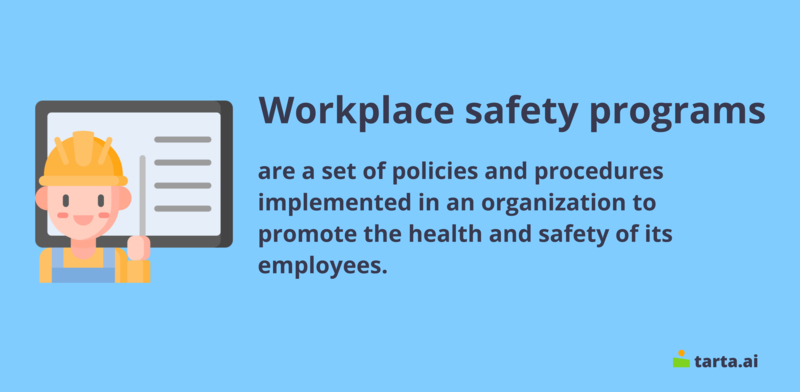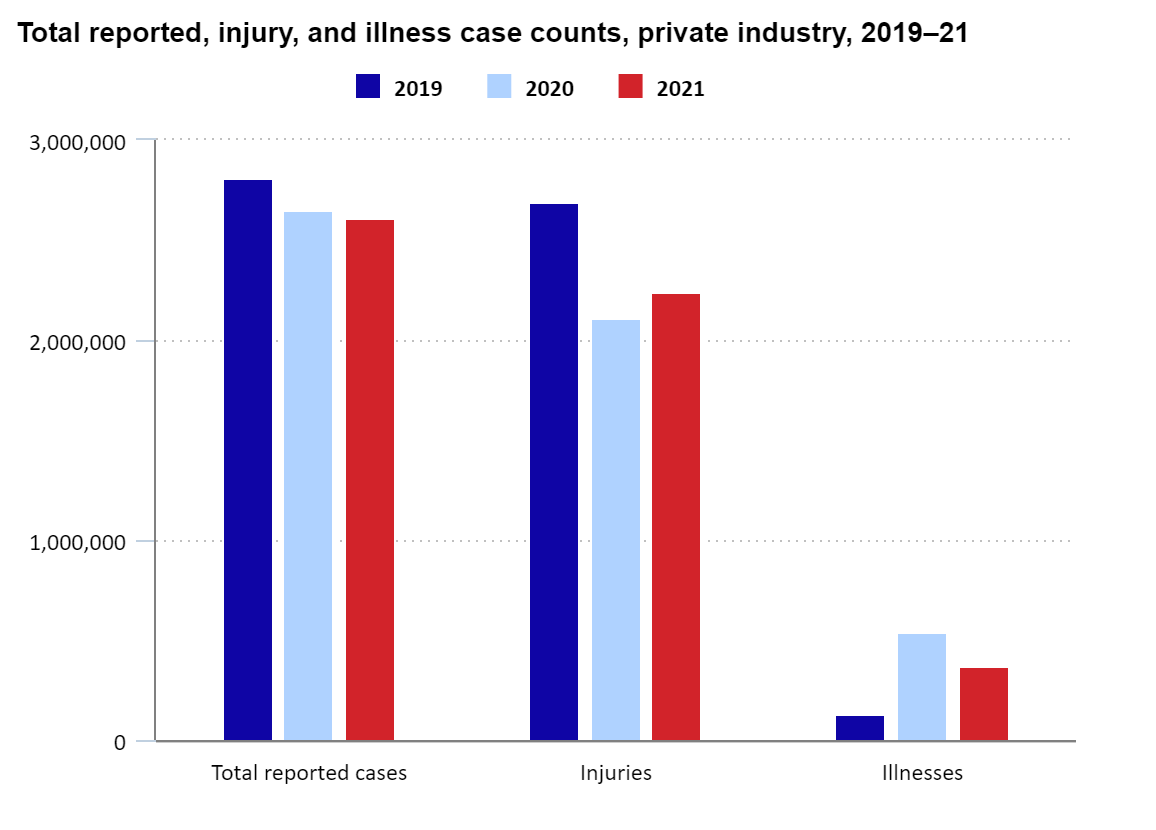Workplace Safety Programs: Ensuring a Safe and Secure Workplace

As employees, we all want to work in a safe and secure environment. However, accidents and injuries can occur in any workplace, regardless of the industry or location. Workplace safety programs are essential for employers to ensure the safety and wellbeing of their employees. In this article, we will discuss the importance of workplace safety programs, the legal and moral obligations of employers, and the elements that make up a comprehensive safety program.
- Workplace safety programs are essential for protecting employees from accidents and injuries, improving efficiency and productivity, and demonstrating an employer's commitment to employee safety and wellbeing.
- Employers have a legal and moral obligation to ensure the safety and wellbeing of their employees, including complying with OSHA regulations, providing training and education, and fostering a culture of safety.
- A comprehensive workplace safety program begins with a risk assessment, which involves identifying potential hazards, evaluating the likelihood and severity of accidents, and recommending appropriate control measures.
- Employers can use engineering controls, administrative controls, and personal protective equipment as control measures to ensure a safe workplace.
- Regular training and education on safe work practices, hazard recognition and control, and emergency procedures are essential components of any workplace safety program.
- Monitoring and evaluation, incident reporting and investigation, and feedback from employees are essential for ensuring the effectiveness of a workplace safety program.
- Employers should regularly review and update the workplace safety program as needed to ensure that employees are informed of any changes and provide necessary training and education.
Importance of Workplace Safety Programs
Workplace safety programs are crucial for several reasons. Firstly, they protect employees from accidents and injuries, which can result in physical harm, emotional distress, and financial losses. Secondly, they can improve the efficiency and productivity of a workplace by reducing absenteeism, medical costs, and worker's compensation claims. Finally, they demonstrate an employer's commitment to their employees' safety and wellbeing, which can enhance employee morale, loyalty, and job satisfaction.
Legal and Moral Obligations of Employers
Employers have a legal and moral obligation to ensure the safety and wellbeing of their employees. According to the Occupational Safety and Health Act (OSHA), employers are required to provide a workplace free from recognized hazards that are causing or are likely to cause death or serious physical harm to employees. Employers must also comply with OSHA standards and regulations, provide training and education to employees, and keep records of workplace injuries and illnesses.
Moreover, employers have a moral responsibility to care for their employees' wellbeing. Creating a safe and secure workplace is not only good for business, but it is also the right thing to do. Employers should prioritize the safety of their employees, ensure that they have the necessary equipment and training to perform their jobs safely, and foster a culture of safety in the workplace.
According to the Occupational Safety and Health Administration (OSHA), workplaces that establish safety and health management systems can reduce their injury and illness costs by 20 to 40 percent.
Risk Assessment
A comprehensive workplace safety program begins with a risk assessment. A risk assessment involves identifying potential hazards, evaluating the likelihood and severity of accidents, and recommending appropriate control measures.
- Identifying Potential Hazards: Employers should conduct a thorough inspection of their workplace to identify potential hazards. Hazards can include physical hazards (e.g., slippery floors, unguarded machinery), chemical hazards (e.g., toxic substances), biological hazards (e.g., viruses, bacteria), and ergonomic hazards (e.g., repetitive motions, awkward postures).
- Evaluating Likelihood and Severity of Accidents: Employers should evaluate the likelihood and severity of accidents that could result from each hazard. For example, a slip-and-fall accident may be likely to occur if a workplace has slippery floors, and the severity of the accident may depend on the height of the fall and the surface of the floor.
- Recommending Appropriate Control Measures: Employers should recommend appropriate control measures to eliminate or reduce the risk of accidents. Control measures can include engineering controls (e.g., machine guards, ventilation systems), administrative controls (e.g., safe work procedures, training), and personal protective equipment (e.g., safety glasses, respirators).
There were 2.6 million nonfatal workplace injuries and illnesses reported by private industry employers in 2021, a 1.8-percent decrease from 2.7 million cases in 2020.

Source: Bureau of Labor Statistics
Control Measures
Employers must ensure that control measures are effective and regularly reviewed. Engineering controls, administrative controls, and personal protective equipment are the three types of control measures that employers can use to ensure a safe workplace.
- Engineering Controls: Engineering controls involve modifying the workplace or equipment to eliminate or reduce hazards. Examples of engineering controls include machine guards, ventilation systems, and anti-slip surfaces.
- Administrative Controls: Administrative controls involve modifying work procedures or policies to eliminate or reduce hazards. Examples of administrative controls include safe work procedures, employee training, and scheduling rest breaks.
- Personal Protective Equipment (PPE): Personal protective equipment involves providing employees with equipment to protect them from hazards. Examples of PPE include safety glasses, gloves, and respirators.
Training and Education
Regular training on safe work practices, hazard recognition and control, and emergency procedures are an essential component of any workplace safety program. Employers must ensure that their employees are knowledgeable and equipped to perform their jobs safely. Training and education can help employees identify and avoid hazards, understand the importance of safety procedures, and respond appropriately in case of an emergency.
- Training on Safe Work Practices: Employers should provide employees with training on safe work practices relevant to their job tasks. This can include training on the proper use of equipment, safe lifting techniques, and proper body mechanics.
- Hazard Recognition and Control: Employers should also provide training on hazard recognition and control. This can include training on how to identify and report potential hazards in the workplace and how to implement appropriate control measures.
- Emergency Procedures: Employers should provide training on emergency procedures, including evacuation plans, first aid, and fire safety. Employees should know what to do in case of an emergency and be familiar with the location of emergency equipment, such as fire extinguishers and first aid kits.
OSHA reports that the construction industry has the highest rate of fatal work injuries, with falls being the leading cause of death.
Monitoring and Evaluation
Regular inspections and audits, incident reporting and investigation, and feedback from employees are essential for monitoring and evaluating the effectiveness of a workplace safety program.
- Regular Inspections and Audits: Employers should conduct regular inspections and audits of the workplace to identify potential hazards and ensure that control measures are in place and effective. Inspections can be conducted by a designated safety officer or a trained employee.
- Incident Reporting and Investigation: Employers should establish a system for employees to report incidents and injuries. This can help identify patterns and areas for improvement in the workplace safety program. Employers should also investigate incidents to determine their root cause and implement corrective actions to prevent future incidents.
- Feedback from Employees: Employers should encourage employees to provide feedback on the workplace safety program. This can include suggestions for improvements or concerns about potential hazards. Employers should take employee feedback into account when evaluating and updating the workplace safety program.
Updating the Program as Needed
Finally, employers should regularly review and update the workplace safety program as needed. Changes in the workplace or industry, new regulations or standards, and feedback from employees can all necessitate updates to the program. Employers should ensure that employees are informed of any changes to the program and provide necessary training and education.
In conclusion, workplace safety programs are essential for employers to ensure the safety and wellbeing of their employees. Employers have a legal and moral obligation to provide a workplace free from hazards and comply with OSHA standards and regulations. A comprehensive workplace safety program includes a risk assessment, control measures, training and education, monitoring and evaluation, and updates as needed. By prioritizing workplace safety, employers can protect their employees and create a positive and productive work environment.
FAQ
Why are workplace safety programs important?
Workplace safety programs are important because they help prevent workplace injuries and illnesses, reduce the risk of accidents and fatalities, and improve employee morale and productivity.
What are the components of a workplace safety program?
Hazard identification and assessment, risk management, employee training and education, safety procedures and policies, emergency response planning, and ongoing program evaluation and improvement.
Who is responsible for implementing a workplace safety program?
The employer is responsible for implementing a workplace safety program, but all employees have a role to play in maintaining a safe and healthy workplace.
How can employees participate in a workplace safety program?
By following safety policies and procedures, reporting hazards or unsafe conditions, attending safety training sessions, and actively engaging in safety-related discussions and activities.
How can workplace safety programs be evaluated and improved?
By conducting regular safety audits and inspections, analyzing accident and incident data, gathering employee feedback, and making changes to policies and procedures as needed to address identified areas for improvement.